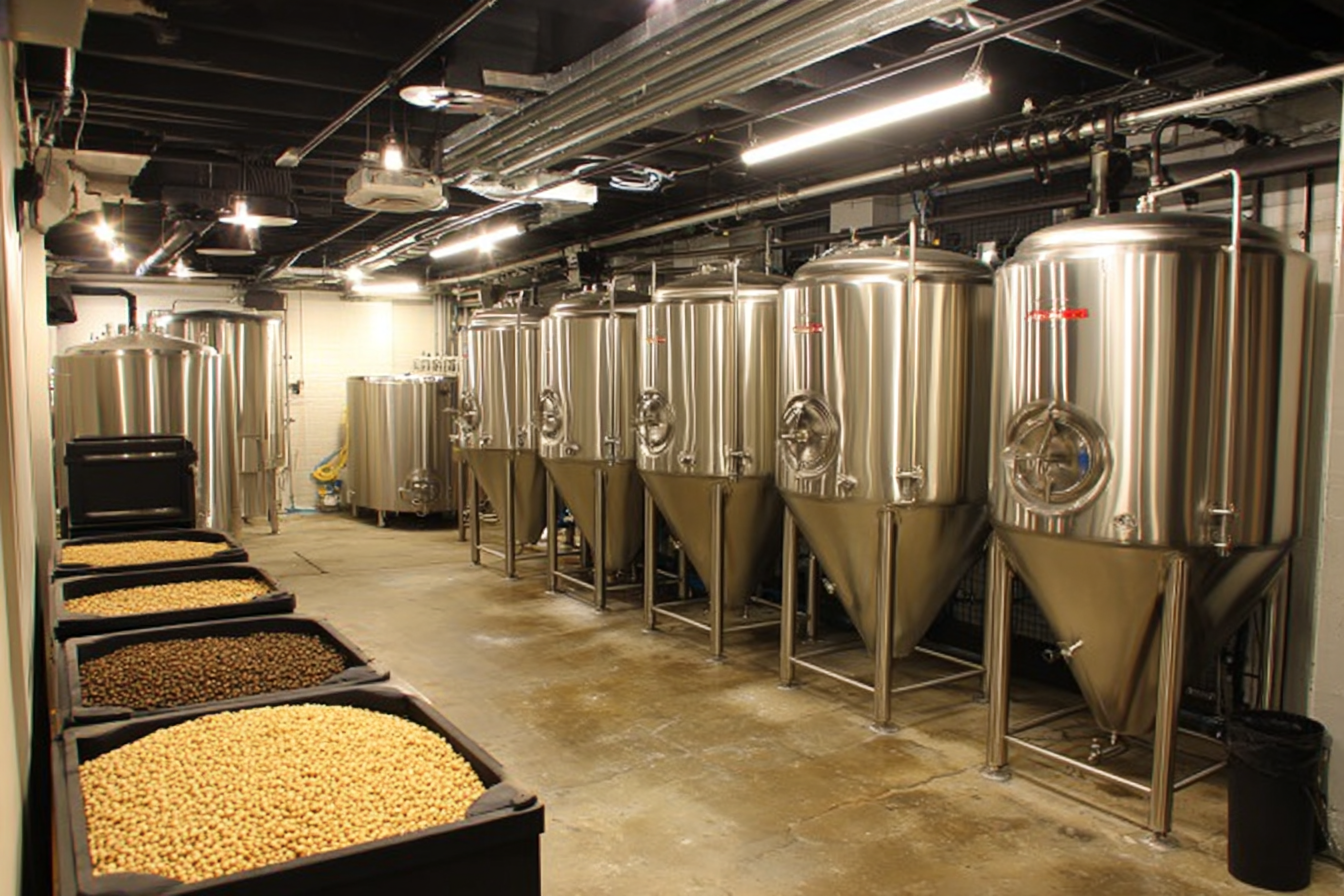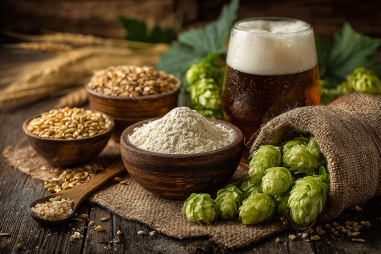American Strong Ale is a bold beer style that commands attention with its robust flavors and high alcohol content. Loved by craft beer enthusiasts, this style showcases the brewer’s prowess in balancing malt richness, hop character, and yeast complexity. If you’ve ever wondered how this powerful brew comes to life, you’re in for a treat. Let’s embark on a detailed journey through the brewing process of American Strong Ale, from the selection of raw ingredients to the moment it’s poured into your glass.
Overview of American Strong Ale Style
American Strong Ale is known for its deep, complex malt profile combined with assertive hop bitterness and aromas. It usually features an Alcohol by Volume (ABV) ranging from 7% to 12%, making it a potent and flavorful beer. This style is often characterized by rich caramel and toasty malt notes, complemented by a resinous or piney hop presence. Given its strength and complexity, American Strong Ale is a versatile beer that can pause between being a bold sipping beer or a bold companion for rich foods.
The brewery’s task is to create harmony between intense malt sweetness and a balanced bitterness to prevent the beer from feeling too heavy or cloying. Achieving this harmony begins with ingredient selection and precise brewing techniques.
Selecting the Right Malts and Adjuncts
The foundation of any American Strong Ale starts with the malt bill. Craft brewers typically use a rich combination of malted barley varieties to build body, sweetness, and color. Base malts like pale malt or two-row malt provide fermentable sugars and a clean malt backbone. To develop the characteristic flavor complexity, specialty malts like crystal malt, caramel malt, and sometimes chocolate malt are added. These specialty malts contribute to the beer’s deep amber to mahogany color along with flavors of caramel, toffee, and roasted nuts.
Some brewers may also include adjuncts such as corn or sugar to boost the fermentable sugar content, which helps to elevate the alcohol level without excessively increasing the beer’s body. This practice also lightens the mouthfeel, preventing the ale from becoming too heavy. However, many traditionalists prefer to rely solely on malt for both flavor and alcohol.
Mash and Lautering Techniques
The mashing process is where malted grains are steeped in hot water, converting starches into fermentable sugars. For American Strong Ale, mash temperatures typically range from 148°F to 156°F (64°C to 69°C), depending on the desired body and fermentability. Lower mash temperatures (closer to 148°F) produce more fermentable sugars, leading to a drier, thinner beer, while higher temperatures (near 156°F) yield more unfermentable sugars, resulting in a fuller-bodied ale.
Extended mash rests or multiple infusion steps may be used by brewers seeking to maximize malt complexity and body. Once mashing is complete, lautering begins — a process where the sugary wort is separated from the spent grain. Careful sparging ensures maximum extraction of sugars without introducing unwanted astringency.
Hop Additions and Timing
Hops play an essential role in balancing the sweetness of the malt and adding aroma characteristic of American Strong Ales. Brewers typically use American hop varieties known for their bold citrus, pine, and resinous notes, such as Cascade, Centennial, Amarillo, or Simcoe.
The timing of hop additions is crucial:
- Bittering hops are added early in the boil (usually at the start) to extract alpha acids, which provide the beer’s bitterness.
- Flavor hops are introduced mid-boil (around 15–30 minutes before the end) to contribute hop flavor without excessive bitterness.
- Aroma hops are typically added in the last few minutes of the boil or even during whirlpooling, enhancing hop aroma and freshness.
These layers of hop additions ensure the beer has a balanced bitterness and a complex hop profile that complements the malt backbone.
Yeast Selection and Fermentation Details
Yeast strains can greatly impact the final profile of American Strong Ale. Most brewers opt for ales yeast strains that ferment cleanly but tolerate high alcohol levels, such as English or American ale yeasts. These strains help highlight malt and hop character without producing excessive esters or phenols that might overwhelm the beer.
Fermentation usually starts at moderate temperatures around 65°F to 70°F (18°C to 21°C), which promotes healthy yeast activity and flavor development. Due to the high gravity of the wort (the sugar-rich liquid before fermentation), yeast nutrients may be added to ensure a strong fermentation.
Primary fermentation can last from seven to 14 days, depending on yeast strain and pitch rate. Following primary, some brewers choose a secondary fermentation or conditioning phase to further clean up flavors and mellow any harsh notes.
Conditioning and Aging
American Strong Ales often benefit from extended conditioning periods. Aging allows the different flavor components to meld together, softening harsh edges and developing a more rounded profile. This can be done in fermentation tanks, conditioning tanks, or even barrels if the brewer wants to introduce additional character like oak or bourbon notes.
Temperature control is key during conditioning, with cooler temps (around 50°F to 60°F or 10°C to 15°C) favored to slow yeast activity and promote clarity. Many brewers carbonate their Strong Ales to moderate levels, aiming for a smooth mouthfeel that highlights the beer’s balance.
Packaging and Quality Control
Once the beer has reached its desired flavor and clarity, it’s time for packaging. American Strong Ale can be packaged in bottles, cans, or kegs. Proper sanitation is critical during this stage to avoid contamination. Additionally, brewers may perform final tweaks such as dry hopping for aroma boost or spicing before packaging.
Quality control measures include checking alcohol content, bitterness units (IBUs), carbonation levels, and microbiological stability. Taste testing is also critical to ensure the beer meets the brewers’ standards for flavor, aroma, and balance.
Tips for Homebrewers to Make American Strong Ale
Brewing American Strong Ale at home can be an exciting challenge. Here are some helpful tips for homebrewers striving to replicate this style:
- Prepare for a high-gravity mash: Use adequate water volume and a strong yeast pitch to handle the high sugar concentration.
- Choose quality specialty malts: Don’t be afraid to experiment with caramel and roasted malts to build complexity.
- Monitor fermentation temperature closely: Keeping temperatures steady helps produce cleaner flavors.
- Use yeast nutrient: This supports healthy yeast in the high-alcohol environment.
- Decide on hop bitterness range: Aim for balance — typically 50–70 IBUs depending on your malt bill and desired hoppiness.
- Plan for longer conditioning: Give your beer time to mellow; patience is crucial with big beers.
By following these guidelines and paying attention to detail throughout the process, homebrewers can create an American Strong Ale that rivals those from commercial craft breweries.
Unlocking the Brewing Artistry Behind American Strong Ale
The journey from grain to glass in crafting American Strong Ale truly showcases the brewer’s artistry and technical skill. Every step — from selecting the right malts and hops to managing fermentation and conditioning — intertwines to create a beer that is both powerful and nuanced. This style’s complexity rewards those passionate about flavor and balance, making American Strong Ale a shining example of creative brewing in the craft beer world. So the next time you savor a glass of this robust brew, remember the careful craftsmanship that brought those bold flavors to life.







